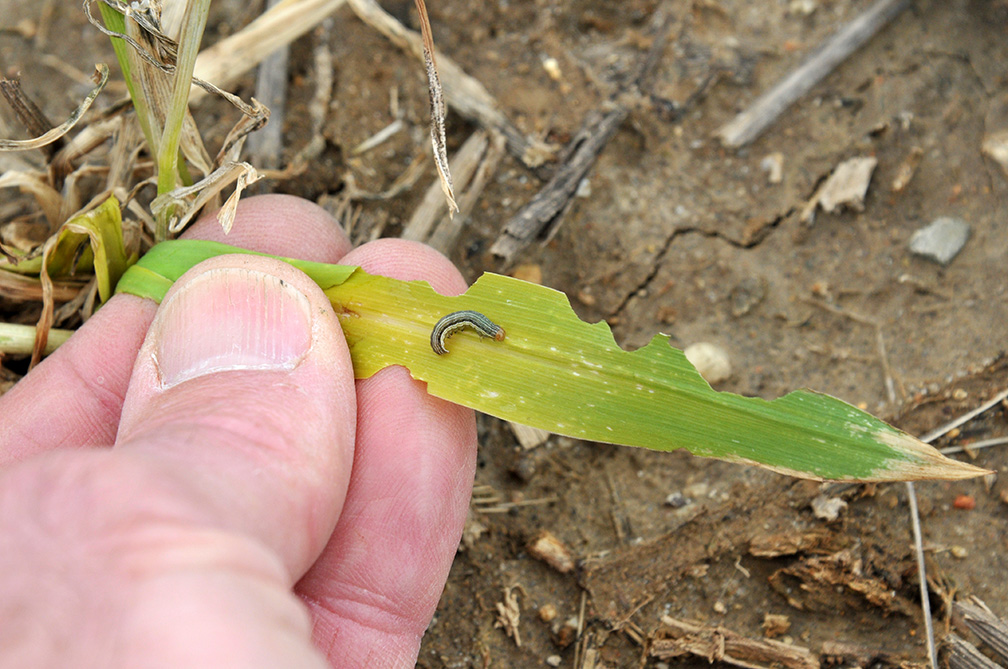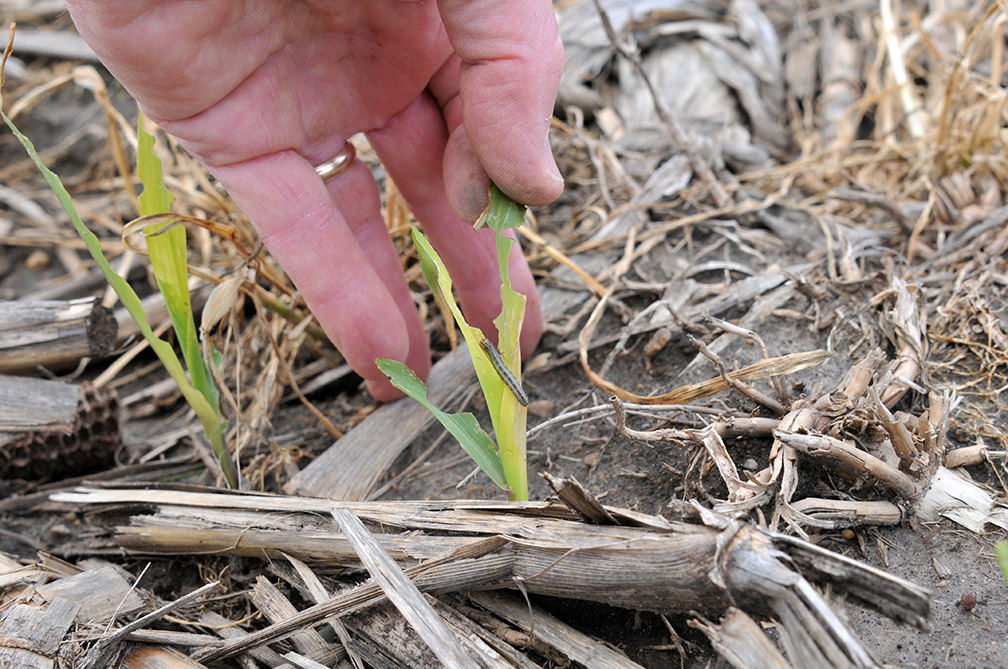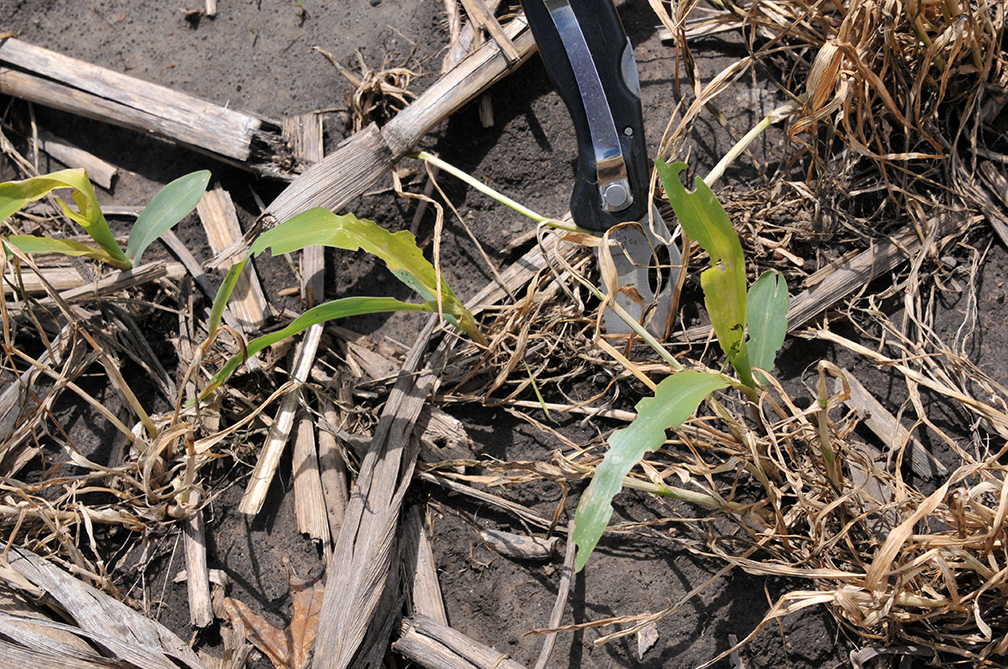By Christian Krupke, John Obermeyer
 Small armyworm on damaged leaf. |
A random inspection of a 2-leaf cornfield, no-tilled into a burned down grassy cover crop in west central Indiana, revealed some armyworm leaf feeding. While carefully looking under crop and cover-crop debris, armyworm larvae about ½-inch long were found.
Because armyworm primarily feed at night, careful searching in the vicinity of damaged plants is necessary to find these small larvae. Initially the damage appears negligible to the plant, but as the armyworm increase in size, so does their appetite. These small larvae are easy to treat/kill with insecticides, but the larger ones are not as easily controlled.
 This armyworm remained feeding during the day. |
High-risk crops are those where dense grassy vegetation (e.g., wheat, grass hay, grass cover crops) still exist and have generally been burned down for planting. Corn that has been no-tilled into a grass cover crop, especially annual rye, should be inspected immediately for armyworm feeding. Hatched larvae will move from the dying grasses to emerging/emerged corn.
There is nothing that resembles armyworm feeding at this time of year — armyworm feeding gives corn a ragged appearance, with feeding extending from the leaf margin toward the midrib. Depending on the armyworm population, most of the plant can be consumed. Severe damage is often compared to pencils sticking out of the ground.
 Characteristic feeding damage from small armyworm. |
Don’t be complacent with Bt corn hybrids, as high armyworm infestations will still cause significant damage before the insecticidal proteins in Bt corn reduce their feeding. Seed-applied insecticides, even high rates, will not control armyworm. In short, there is no in-plant or on-seed solution that will allow you to avoid scouting on this one.
Remember, once armyworm larvae reach an inch or more in length, they eat a tremendous amount of foliage in a short period of time and become harder to kill. Large areas of seedling corn can be wiped out overnight under heavy infestations.






Post a comment
Report Abusive Comment